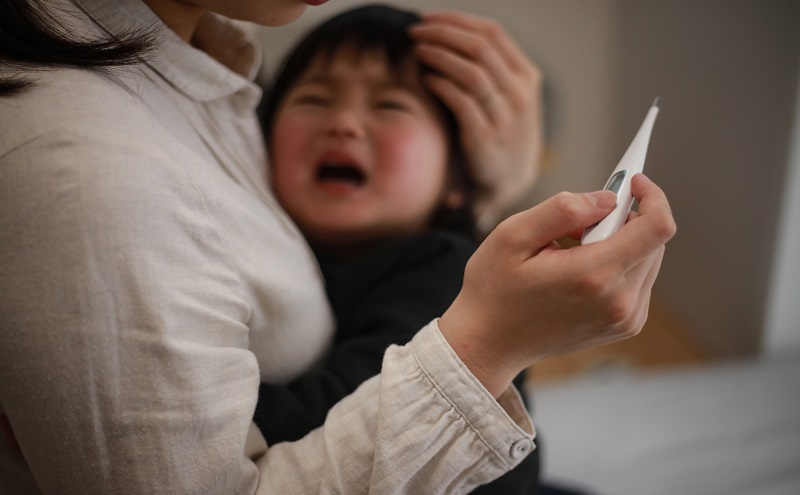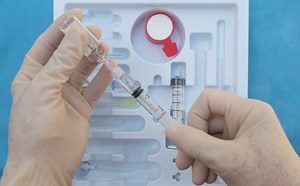
Ask the Expert-Management of the Well-Appearing Febrile Young Infant: Integrating the AAP Guideline into Practice
Nathan Kuppermann, MD, MPH, an author of the AAP guideline and the lead investigator for the multicenter Pediatric Emergency Care Applied Research Network (PECARN) febrile infant studies, and Corrie E. McDaniel, DO, and Paul L. Aronson, MD, MHS, the co-leads of the AAP Reducing Excessive Variability in Infant Sepsis Evaluation II (REVISE II) quality improvement collaborative
- What is the definition of a positive urinalysis? Just dip stick, microscopy, spun microscopy?
See Webinar
- How do you get your urine specimen? Catheter? Do you view uncircumcised males differently? Did data differentiate between circumcised and uncircumcised males?
The American Academy of Pediatrics (AAP) guideline recommends obtaining a urine specimen by any means (ie, bag, spontaneous void, catheter, or suprapubic aspiration) after 21 days of age (catheter is recommended in infants age ≤21 days). In cases where the urinalysis (UA) is positive, if it was obtained via a bag specimen, then it ought to be repeated for a second sterile sample before sending for culture, as urine from a bag should not be sent for culture due to risk of ambiguous or false positive cultures. Clearly this is not ideal, although for parents who would prefer to avoid catheterization, the guidelines do propose offering a bag specimen or clean, spontaneous, or stimulated void as an option for obtaining a UA. Of note, the specificity of leukocyte esterase from a UA off a bag specimen is less than catheterization (84% bag vs 94% cath, p<0.001) and the receiver operating characteristic (ROC) is lower for white blood cell (WBC) (0.71 vs 0.86) (Schroeder et al. JAMA Pediatr 2005). Of note, there is data that limiting catheterizations to older infants with a positive UA by bag reduces rates of catheterization by >50% without increasing length of time in the emergency department (Lavelle et al. Pediatrics 2016).
As for circumcision, the incidence of urinary tract infection (UTI) for circumcised males 29-60 days is <1% and the guideline makes an exception for routinely needing to obtain a UA in circumcised males >28 days. In a meta-analysis by Eisenberg et al in 2018, they demonstrated no difference in the rate of UTI in the first 2 weeks of life; however, up to 2 years of age that uncircumcised boys had a higher rate of UTI compared to circumcised (2.68/100person-years vs 0.59/100 person-years, p=0.0005).
- We have received some pushback on infants with + urinalysis and >100 white blood cells (WBCs) in the urine. There is concern from some that the number of WBCs in UA correlates with the risk of meningitis. I have not seen that in the literature. Would you comment please?
See Webinar
- Any considerations for respiratory viral positive infants in the 29–60-day range (especially closer to 60 days)? Is UA sufficient or do you still recommend blood culture/inflammatory marker (IM)?
See Webinar
- Recognizing that this is likely somewhat anecdotal and rare, I recall infants with negative urinalyses and positive urine cultures. This is the hardest de-implementation for me. How can you reassure me and my colleagues?
See Webinar
- Have there been any studies regarding the test characteristics of inflammatory markers in infants who have previously received antibiotics within the few days prior to presentation? Is there any guidance for these patients with respect to full serious bacterial infection (SBI)/invasive bacterial infection (IBI) work-up and cut-points for inflammatory markers?
To my knowledge, there are no such studies of substantial size to make recommendations or guide clinical decision-making. The great majority of research studies pertaining to prediction rules and laboratory thresholds regarding febrile infants either exclude those who have recently been on antibiotics or have few such patients as to not be able to make recommendations.
- How does one factor prematurity into the algorithms?
Again, most prediction rules exclude prematurity. There is ongoing research on this topic likely to come out soon. There are two factors at play here: degree of prematurity (likely associated with robustness of immune system) and chronological age. The sum of these two factors is termed the “post-menstrual age.” We are also planning studies in PECARN on this topic. But for now, we tend to be more conservative in the first 2 months of life in the evaluation of febrile infants who are ≤36 weeks gestational age.
- The UA is not diagnostic for UTI. UTI is likely the most common cause of leukocyturia but not the only cause. Not to perform a lumbar puncture in a sick patient with a "positive UA" is risky. I know by personal experience in two patients with "positive UA" diagnosed clinically to have UTI that turned out to have negative urine culture but had herpes simplex virus (HSV) meningitis.
See Webinar
(Does not refer to well-appearing patient but worth re-stating that the AAP guideline is for well-appearing infants. Ill-appearing infants should be managed with a comprehensive evaluation and management as if they have IBI until cultures result in 24-36 hours.)
- Is (+) bacteria in a catheter UA relevant?
See Webinar
- For those with a negative lumbar puncture allowed to go home, what are the dosing recommendations for Rocephin prior to discharge?
Rocephin (ceftriaxone) prior to discharge home is recommended for febrile infants 22 to 28 days of age with normal urinalysis, normal inflammatory markers, and normal cerebrospinal fluid (CSF) after shared decision-making with the caregivers about hospitalization vs. discharge home. If the joint decision made is for discharge home with 24-hour follow-up, the dose of Rocephin is 50 mg/kg.
- The rate of bacteremia appears to be higher (closer to 2.5-3%) in the 21–28-day age group vs the >28-day group. Can you explain the impetus for separating these 2 groups in the AAP guideline? Comment on acceptable miss rate/risk tolerance of providers, families? Comment on giving dose of Ceftriaxone and discharge if CSF negative?
The rate of bacteremia is higher in the younger age range as are the risks of meningitis. It is because these rates are different in the 2-3rd week vs the 4th week versus beyond that the guideline split the recommendations into the 3 age groups.
The guideline specifically discusses risk tolerance, and each clinician and parent will have different thresholds for decision making. The point the guideline makes is that numbers are not decisions, but understanding the numbers helps to inform a shared decision-making process between a clinician and a family.
The use of ceftriaxone and discharge for an infant 22-28 days is in the context of 3 conditions: normal UA, normal IMs, normal CSF. The risk of bacteremia in this context is 1-2% (lower than the baseline 2.5-3% risk given that the UA and CSF are normal). A dose of ceftriaxone provides antimicrobial coverage x 24h and if the child has reliable follow-up, then ideally would be seen to follow-up on blood culture results and further determination of need for ongoing antimicrobial coverage. Again, these are well appearing children who do not need hospitalization for other indications, including feeding support or follow-up needs.
- My emergency department/hospital does not have routine procalcitonin (PCT). What would you recommend or is there a way to adapt your risk stratification/management strategy in this case?
If procalcitonin (PCT) is not available, the AAP guideline recommends using height of temperature (abnormal value: >38.5⁰C) in combination with ANC (abnormal value: >4,000 – 5,200 cells/mm3, with our recommendation to use 5,200 cells/mm3 in the absence of PCT) and CRP (abnormal value: ≥20 mg/L). This combination of inflammatory markers has been evaluated retrospectively in a single center study in Montreal by Burstein et al (Pediatrics 2022). Using an ANC cutoff of 5,200 cells/mm3, this combination of inflammatory markers had a sensitivity of 100% (95% CI: 87-100%) and specificity of 46% (95% CI: 43-50%) for IBI. This combination of inflammatory markers needs to be evaluated in a multicenter study.
The ANC cutoff of 5,200 cells/mm3 was derived in a multicenter (retrospective) case control study by Aronson et al (Pediatrics 2019) that Dr. Kuppermann discussed during the webinar. This study used multiple logistic regression to derive a point based IBI score that included age, height of temperature, abnormal urinalysis, and ANC. Although a score of ≥2 had a high sensitivity of 99% for IBI, the specificity was low at 31%. The bottom line is that PCT-based algorithms, such as the PECARN prediction rule have a similarly high sensitivity but a higher specificity that algorithms that do not include PCT.
- Do you change your approach in any way based on fever measured at home vs in emergency department (ED)/hospital or based on the height of fever?
The bottom line from multiple studies that have evaluated the prevalence of UTI and IBI among young infants with fever at home but who are afebrile in the ED, compared with infants febrile in the ED, is that the prevalence of UTI is slightly lower in infants afebrile in the ED, but that the risk is non-negligible, and that the prevalence of IBI is similar. Therefore, infants with fever at home but not in the ED should be managed in the same manner as infants with fever in the ED. As discussed in the response to the question above, height of temperature (abnormal value: >38.5⁰C) is recommended to be used in combination with absolute neutrophil count (ANC) and C-reactive protein (CRP) for risk stratification when procalcitonin (PCT) is not available. When PCT is available, height of temperature should not be used for risk stratification, and instead PCT should be used in combination with ANC (using the PECARN prediction rule) +/- CRP (which is a component of the Step-by-Step approach).
- Can you comment on when to use Acyclovir or HSV risk factors that you employ to work-up and treat these patients?
As shown in several studies, including a large, retrospective cohort study from the PEM CRC research network (Cruz et al Pediatrics 2016), HSV infection is uncommon in febrile infants, and is particularly rare after 28 days of age (and infrequent overall after 21 days of age). Brower et al published the results of a quality improvement (QI) initiative (Pediatrics 2019) in which their institution implemented a standardized approach to HSV evaluation and management. Specifically, for infants ≤28 days of age undergoing an evaluation for UTI or IBI, in the presence of HSV high risk factors (eg, maternal HSV symptoms perinatally, vesicles, sepsis-like syndrome, hypothermia, neurologic symptoms), a comprehensive HSV evaluation is recommended (including surface, mucus membrane, serum, and CSF HSV polymerase chain reaction [PCR]) with initiation of high dose acyclovir. For infants without HSV high risk factors, an HSV CSF PCR was recommended in infants in ≤21 days of age with a more comprehensive evaluation for HSV and acyclovir initiated in the presence of CSF risk factors for HSV (eg, lymphocytic predominant CSF pleocytosis). Implementation of this standardized approach increased guideline-concordant care and reduced acyclovir use in non-high-risk patients without delayed diagnoses of HSV.
- How would you approach the situation of a missed lumbar puncture in the younger or higher risk age group? How/do you use inflammatory markers in this case?
Lumbar punctures (LPs) are often not successful. Up to 50% of LPs are often traumatic or failed (Scarfone et al J Pediatr 2017, Nigrovic et al Ann Emerg Med 2007). The guideline does not recommend correcting CSF WBC counts with RBC counts to 10k, based on normative CSF values for infants (Byington et al J Pediatr 2011).
The guideline recommends in KAS 10 that in the setting of a bloody or failed LP, normal inflammatory markers (IMs) may influence decisions regarding hospitalization, initiation of antimicrobials, and duration of treatment.
In the setting of positive IMs in an infant 22-28 days for whom CSF is recommended but not obtained or is uninterpretable, or an infant <22 days, then admission is recommended (KAS 13b). The guidelines do not get further into the weeds on antimicrobials, although most would likely start antibiotics with another attempt for a LP (with or without interventional radiology [IR] assistance) and, ideally, bacterial PCR, although these are resource dependent. Traumatic or uninterpretable CSFs certainly contribute to prolonged lengths of stays and potentially overtreatment of a small portion of infants. We do not have enough data, yet, on the use of IMs to help guide decision making in infants <22 days.
- How do you approach working with other clinicians in your hospital that are resistant to implementing these newer guidelines (example: outpatient pediatric clinicians with different expectations who send patients to the emergency department, infectious disease physicians who may be more conservative in their practice, etc)?
Successful implementation (and deimplementation) is a process over time. Perfection is often the enemy of progress in implementation work and often good is enough to start. That is the point of structured implementation and Plan, Do, Study, Act (PDSA)– you start with one thing, measure outcomes, feedback data, then make small incremental change. In the presentation, I shared tools for deimplementation success including de-coupling behaviors and recognizing that the “right rate” for an intervention is often not zero. The citation for those and more strategies: McDaniel CE, House SA, Ralston SL. Behavioral and Psychological Aspects of the Physician Experience with Deimplementation. Pediatr Qual Saf. 2022).




